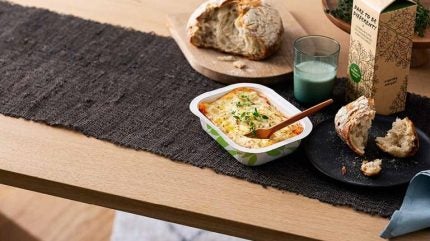
The packaging industry is undergoing a significant shift as sustainability continues to be a driving force behind packaging innovation. Among the most notable trends in recent years is the rise of barrier board packaging, a sustainable alternative to traditional plastic materials.
As consumer demand for environmentally friendly packaging solutions grows and regulations surrounding plastic use tighten, barrier board is emerging as a practical, eco-friendly substitute.
This shift is not only reshaping the packaging landscape but also benefiting businesses and the environment. In this article, we explore why barrier board is replacing plastic in packaging, its advantages, and the future of this rapidly growing sector.
The growing push for sustainable packaging
In recent years, plastic has faced increasing scrutiny due to its environmental impact, particularly its contribution to the global waste crisis.
The packaging industry, a major consumer of plastic, has seen a significant push towards sustainability as businesses strive to meet both regulatory requirements and consumer expectations.
This shift is driven by a combination of consumer awareness, regulatory pressures, and the increasing recognition of the environmental cost of plastic waste.
Governments around the world have introduced stricter regulations on plastic use, particularly for single-use plastics. For example, the European Union’s ban on certain single-use plastics, including straws, cutlery, and plastic packaging, has forced industries to explore alternative materials.
This has led to a surge in demand for sustainable packaging solutions, with barrier board emerging as one of the most viable options.
Barrier board, made from renewable paper-based materials, provides an excellent alternative to plastic in a range of applications, including food and beverage packaging. It offers similar protective qualities, such as moisture and oxygen resistance, without the harmful environmental effects of plastic.
Barrier coatings, often made from bio-based or compostable materials, ensure that the board meets the same performance standards required for packaging while being more eco-friendly.
Key benefits of barrier board packaging
One of the main reasons barrier board is rapidly replacing plastic is its impressive sustainability credentials. Made primarily from renewable sources like wood pulp, barrier board is biodegradable, recyclable, and compostable.
In contrast, plastic packaging can take hundreds of years to break down, contributing significantly to the world’s growing landfill problem.
Barrier board also offers excellent barrier properties, which are essential for packaging perishable goods. The board’s ability to resist moisture, oxygen, and other environmental factors makes it an ideal packaging solution for food, beverages, and cosmetics.
The barrier coatings used in the production of barrier board packaging are often plant-based or compostable, further enhancing its sustainability. The rise of microflute corrugated boards, which are thinner yet strong and durable, is also part of the movement towards more sustainable packaging options.
From a business perspective, adopting barrier board packaging can result in lower carbon footprints and reduced plastic usage, which can help brands meet their sustainability goals.
It also offers consumers a tangible, environmentally conscious option that aligns with their growing demand for sustainable products. In fact, studies show that consumers are willing to pay a premium for products with eco-friendly packaging, making it not only the right choice for the planet but also a smart business decision.
The future of barrier board in the packaging industry
As the demand for sustainable packaging continues to grow, the future of barrier board looks promising. The rise of plastic substitution and the increasing focus on circular economy principles are expected to drive the adoption of barrier board in various sectors.
Market forecasts suggest that the supply of cartonboard and microflute corrugated packaging, particularly for barrier applications, will grow significantly in the next 5 to 10 years.
The ongoing development of new barrier technologies, such as improved coatings and treatments, will further enhance the performance of barrier board.
Innovations in barrier coatings that are both effective and sustainable will allow barrier board to replace plastic in even more demanding applications, further expanding its potential use.
In addition, advancements in recycling technologies are expected to make barrier board packaging even more viable, reducing its environmental impact and closing the loop in a circular economy.
Moreover, as consumers and businesses continue to seek more sustainable packaging options, barrier board will become a staple in sectors such as food and beverage, cosmetics, and e-commerce.
Companies looking to stay ahead of sustainability trends will increasingly turn to barrier board as a way to reduce their reliance on plastics and improve their environmental footprint.
The takeaway
The shift from plastic to barrier board in packaging represents a critical step in the packaging industry’s transition towards more sustainable practices.
Barrier board’s combination of renewable materials, excellent barrier properties, and eco-friendly credentials make it an ideal alternative to plastic packaging, especially in food and beverage applications.
As both consumers and businesses continue to demand more sustainable solutions, the use of barrier board is set to expand, providing a practical, environmentally conscious choice for packaging needs.
With ongoing innovations and growing market demand, barrier board is poised to play a significant role in shaping the future of packaging.



